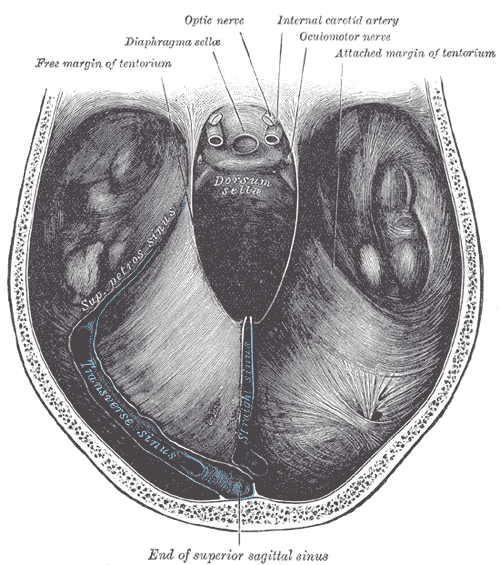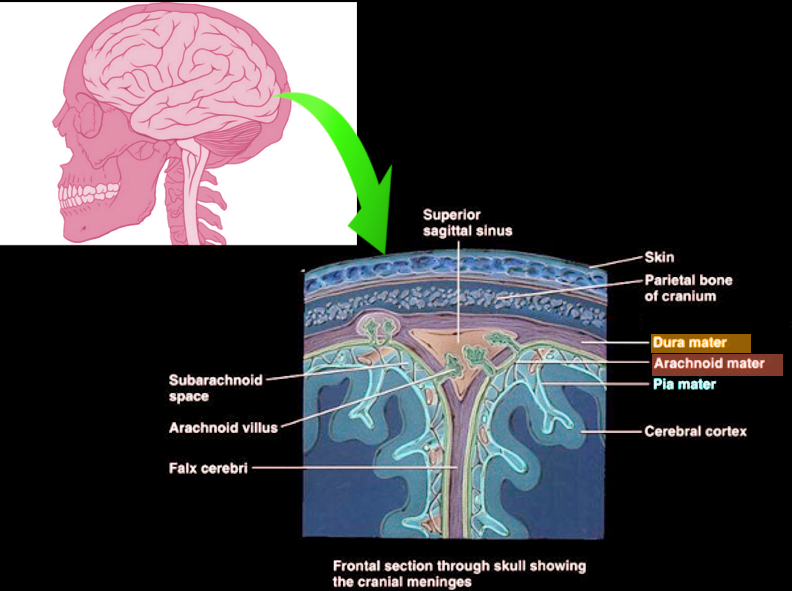[1]
Bican O, Minagar A, Pruitt AA. The spinal cord: a review of functional neuroanatomy. Neurologic clinics. 2013 Feb:31(1):1-18. doi: 10.1016/j.ncl.2012.09.009. Epub
[PubMed PMID: 23186894]
[2]
Elsharkawy H, Sonny A, Chin KJ. Localization of epidural space: A review of available technologies. Journal of anaesthesiology, clinical pharmacology. 2017 Jan-Mar:33(1):16-27. doi: 10.4103/0970-9185.202184. Epub
[PubMed PMID: 28413269]
[3]
Yang C, Yang X, Lan X, Zhang H, Wang M, Zhang Y, Xu Y, Zhen P. [Structure and mechanical characteristics of spinal dura mater in different segments of sheep's spine]. Zhongguo xiu fu chong jian wai ke za zhi = Zhongguo xiufu chongjian waike zazhi = Chinese journal of reparative and reconstructive surgery. 2019 Feb 15:33(2):232-238. doi: 10.7507/1002-1892.201807085. Epub
[PubMed PMID: 30739422]
[5]
Nam MH, Baek M, Lim J, Lee S, Yoon J, Kim J, Lee MS, Soh KS. Discovery of a novel fibrous tissue in the spinal pia mater by polarized light microscopy. Connective tissue research. 2014 Apr:55(2):147-55. doi: 10.3109/03008207.2013.879864. Epub
[PubMed PMID: 24409813]
[6]
Ozawa H, Matsumoto T, Ohashi T, Sato M, Kokubun S. Mechanical properties and function of the spinal pia mater. Journal of neurosurgery. Spine. 2004 Jul:1(1):122-7
[PubMed PMID: 15291032]
[7]
Ceylan D, Tatarlı N, Abdullaev T, Şeker A, Yıldız SD, Keleş E, Konya D, Bayri Y, Kiliç T, Çavdar S. The denticulate ligament: anatomical properties, functional and clinical significance. Acta neurochirurgica. 2012 Jul:154(7):1229-34. doi: 10.1007/s00701-012-1361-x. Epub 2012 May 4
[PubMed PMID: 22555553]
[8]
O'Rahilly R, Müller F. The meninges in human development. Journal of neuropathology and experimental neurology. 1986 Sep:45(5):588-608
[PubMed PMID: 3746345]
[9]
N'da HA, Chenin L, Capel C, Havet E, Le Gars D, Peltier J. Microsurgical anatomy of the Adamkiewicz artery-anterior spinal artery junction. Surgical and radiologic anatomy : SRA. 2016 Jul:38(5):563-7. doi: 10.1007/s00276-015-1596-3. Epub 2015 Dec 1
[PubMed PMID: 26627692]
[10]
Kunam VK, Velayudhan V, Chaudhry ZA, Bobinski M, Smoker WRK, Reede DL. Incomplete Cord Syndromes: Clinical and Imaging Review. Radiographics : a review publication of the Radiological Society of North America, Inc. 2018 Jul-Aug:38(4):1201-1222. doi: 10.1148/rg.2018170178. Epub
[PubMed PMID: 29995620]
[11]
Tobinick E, Vega CP. The cerebrospinal venous system: anatomy, physiology, and clinical implications. MedGenMed : Medscape general medicine. 2006 Feb 22:8(1):53
[PubMed PMID: 16915183]
[12]
BRIDGE CJ. Innervation of spinal meninges and epidural structures. The Anatomical record. 1959 Mar:133(3):553-63
[PubMed PMID: 13670446]
[13]
Yamada H, Honda T, Yaginuma H, Kikuchi S, Sugiura Y. Comparison of sensory and sympathetic innervation of the dura mater and posterior longitudinal ligament in the cervical spine after removal of the stellate ganglion. The Journal of comparative neurology. 2001 May 21:434(1):86-100
[PubMed PMID: 11329131]
Level 2 (mid-level) evidence
[14]
Bosscher HA, Heavner JE, Grozdanov P, Warraich IA, Wachtel MS, Dertien J. The Peridural Membrane of the Human Spine is Well Innervated. Anatomical record (Hoboken, N.J. : 2007). 2016 Apr:299(4):484-91. doi: 10.1002/ar.23315. Epub 2016 Jan 30
[PubMed PMID: 26861845]
[15]
Kunimatsu A, Kunimatsu N, Kamiya K, Katsura M, Mori H, Ohtomo K. Variants of meningiomas: a review of imaging findings and clinical features. Japanese journal of radiology. 2016 Jul:34(7):459-69. doi: 10.1007/s11604-016-0550-6. Epub 2016 May 2
[PubMed PMID: 27138052]
[16]
Kushel' YV, Belova YD, Tekoev AR. [Intramedullary spinal cord tumors and neurofibromatosis]. Zhurnal voprosy neirokhirurgii imeni N. N. Burdenko. 2017:81(1):70-73. doi: 10.17116/neiro201780770-73. Epub
[PubMed PMID: 28291216]
[17]
Yáñez ML, Miller JJ, Batchelor TT. Diagnosis and treatment of epidural metastases. Cancer. 2017 Apr 1:123(7):1106-1114. doi: 10.1002/cncr.30521. Epub 2016 Dec 27
[PubMed PMID: 28026861]
[19]
Cheng Q, Zhang W, Lu Y, Chen J, Tian H. Ropivacaine vs. levobupivacaine: Analgesic effect of combined spinal-epidural anesthesia during childbirth and effects on neonatal Apgar scores, as well as maternal vital signs. Experimental and therapeutic medicine. 2019 Sep:18(3):2307-2313. doi: 10.3892/etm.2019.7776. Epub 2019 Jul 16
[PubMed PMID: 31410181]




